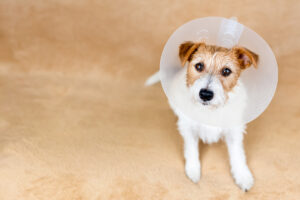
OCD of the shoulder and hock is a troublesome condition for many dogs, but there are ways to manage it.
Osteochondritis dissecans (OCD) is a joint disorder that can significantly impact the health and mobility of dogs. This condition commonly affects the shoulder and hock joints, leading to discomfort and potential long-term issues if not addressed promptly. Recognizing the signs, understanding the causes, and seeking appropriate treatment are crucial for ensuring a high quality of life for affected dogs.
What is OCD?
Osteochondritis dissecans is a developmental condition involving the abnormal growth and formation of cartilage in the joints. In a healthy joint, cartilage provides a smooth, lubricated surface for movement and absorbs the forces exerted during activity. However, in dogs with OCD, the cartilage in the joint does not develop properly. Instead, a flap of cartilage forms, which can become loose and potentially detach from the underlying bone. This loose cartilage can cause pain, inflammation, and joint instability, significantly impacting the dog’s ability to move comfortably.
OCD most frequently occurs in the shoulder and hock joints, but it can also affect other joints, such as the elbow and knee. The condition is often seen in young, fast-growing dogs, particularly those from large or giant breeds. It’s believed to result from a combination of genetic predisposition and environmental factors, such as diet and activity level.
Dogs Most Often Affected by OCD
While OCD can technically affect any dog, certain breeds are more predisposed due to their size and rapid growth rates during puppyhood. Large and giant breeds such as Labrador Retrievers, Golden Retrievers, Great Danes, German Shepherds, and Newfoundlands are at a higher risk. These breeds tend to grow quickly, which may put extra strain on developing joints, leading to conditions like OCD.
Male dogs are also more commonly affected than females, possibly due to differences in growth rates and hormonal influences. Additionally, dogs that are fed a high-calorie diet, leading to rapid weight gain, may be more susceptible to developing OCD, as the additional weight can increase the stress on growing joints.
Diagnosis of OCD
Diagnosing OCD in dogs involves a combination of clinical examination and imaging techniques. Veterinarians typically begin by observing the dog’s gait and physical movements, looking for signs of lameness, stiffness, or reluctance to move certain joints. A thorough physical examination will follow, focusing on the affected joints for signs of pain, swelling, or decreased range of motion.
Imaging, particularly X-rays, plays a crucial role in diagnosing OCD. X-rays can reveal abnormalities in the joint, such as the presence of cartilage flaps or lesions. In some cases, more advanced imaging techniques like CT scans or MRI may be used to provide a more detailed view of the joint and surrounding tissues.
Treatment Options for OCD
The treatment of OCD depends on the severity of the condition and the dog’s overall health. In mild cases, conservative management may be sufficient. This approach includes weight management, exercise restriction, and the use of non-steroidal anti-inflammatory drugs (NSAIDs) to manage pain and inflammation. Physical therapy and joint supplements like glucosamine and chondroitin may also be recommended to support joint health.
However, in more severe cases, surgical intervention may be necessary. Surgery aims to remove the loose cartilage flap and stimulate the growth of new, healthy cartilage. There are various surgical techniques available, including arthroscopy, which is a minimally invasive procedure that allows for quicker recovery times. The choice of surgical method will depend on the specific joint affected and the veterinarian’s expertise.
Post-surgery, a comprehensive rehabilitation plan is essential to ensure a successful recovery. This plan typically includes a controlled exercise regimen, physical therapy, and continued weight management. Regular follow-up visits with the veterinarian are crucial to monitor the dog’s progress and make any necessary adjustments to the treatment plan.
Trust Maryland Veterinary Surgical Services With Your Companion’s Health
Your companion’s health is important, and the team at MVSS is ready to provide the best care possible for your furry family. We are dedicated to combining comprehensive exams and assessments with informative and honest discussions of your companion’s care. Once we have worked with you to decide on the best course of action for your dog, our professionals will use their surgical expertise to work towards the goal of giving your companion an active and pain-free life. We are proud to serve loyal companions in Catonsville and Baltimore. To learn more about our services, give us a call at 410-788-4088 or visit us online. For more information and tips for dog health, follow us on Facebook and Pinterest.
